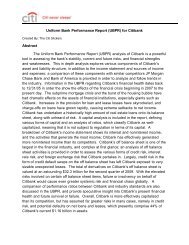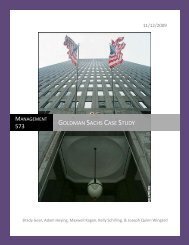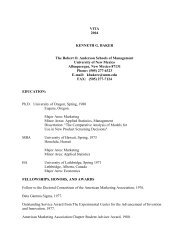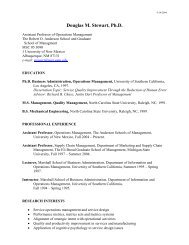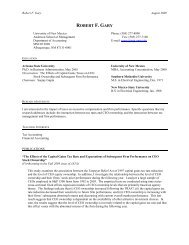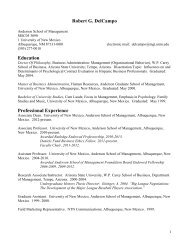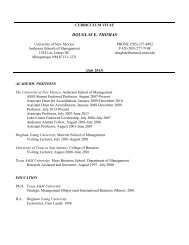Uniform Bank Performance Report - Anderson School of Management
Uniform Bank Performance Report - Anderson School of Management
Uniform Bank Performance Report - Anderson School of Management
You also want an ePaper? Increase the reach of your titles
YUMPU automatically turns print PDFs into web optimized ePapers that Google loves.
Capital ratios, as well as Tier Leverage Ratio vastly exceeded par values. These show that the bank is well<br />
able to cover its risk‐weighted assets with capital.<br />
Another promising element <strong>of</strong> JPMC’s analysis is its Net Income figure. Net income for the bank suffered<br />
briefly in the fourth quarter <strong>of</strong> 2008, but has since made an amazing recovery. Since the beginning <strong>of</strong><br />
2009, net income has been fluctuating at around 75% <strong>of</strong> the levels they were at prior to the crisis.<br />
Liquidity is adequate in JPMC. Its Net non‐core funding dependence ratio has been steadily decreasing,<br />
meaning it is becoming less dependent on volatile sources <strong>of</strong> funding to settle its short‐term debt<br />
obligations. Compared to banks in its peer group, JPMC has an average NNCFDR.<br />
One <strong>of</strong> the factors that contribute to negative confidence in the bank is its relatively significant<br />
susceptibility to market risk. The fact that its interest rate sensitive derivatives outweigh its capital is<br />
frightening. However, the probability that these will end up forcing the bank into insolvency are slim.<br />
This risk is simply something to be taken into consideration when addressing the health <strong>of</strong> the bank, and<br />
should not necessarily deter potential depositors/investors.<br />
Conclusion<br />
Although its financial situation is far from perfect, JPMorgan Chase & Co. is financially stable and shows<br />
potential for growth in the future. It has maintained adequate ratios and numbers in almost every area<br />
<strong>of</strong> analysis, with an additional few that stand out as excellent. It continues to grow in size and scope<br />
through acquisitions and operations, and stands strong among competitors. The major problems faced<br />
by the bank are the large amount <strong>of</strong> toxic assets on and <strong>of</strong>f its balance sheet, and its significant exposure<br />
to market risk. While these may inhibit growth and hurt pr<strong>of</strong>its in the short and medium‐terms, there is<br />
little chance that these problems will cause the bank to become insolvent. This claim is backed by<br />
evidence showing the bank’s strong liquidity and capital adequacy positions, as well as increased<br />
stability and recovery in the financial markets as a whole. In addition, the management <strong>of</strong> the company<br />
has shown that they are well‐able to manage all aspects <strong>of</strong> the bank and its ability to endure financial<br />
hardship as well as prosper in times <strong>of</strong> growth.





